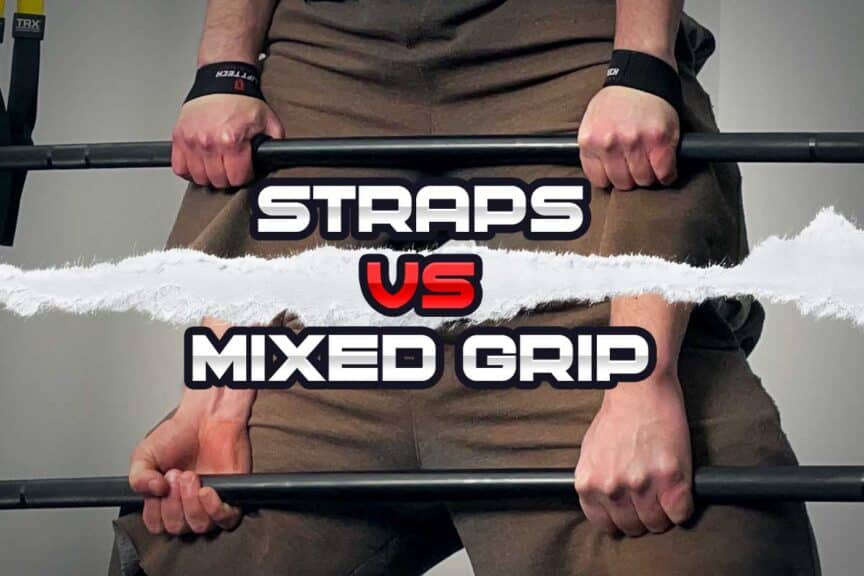Who doesn’t want a heavier deadlift? More plates, more dates, as they say. Besides, let’s be honest here: lifting heavy weight feels good. Like, really good. You likely know this already, though.
What you might not know, however, is whether wrist straps or the mixed grip is best for pulling heavier loads when deadlifting. There are some key factors to consider that I haven’t seen much discussion on within other blog posts. So, you’re in for an educated treat here (assuming you read the highly valuable information in this article)!
Wrist straps and the mixed grip have unique advantages and disadvantages for the deadlift. Both will allow you to lift heavier weight and perform more repetitions when deadlifting by eliminating fatigue to the forearm flexor muscles, but each may also lead to discomfort or injury in some lifters.
To be clear, it’s not about whether one is right or wrong, nor is it about one being better than the other; it’s about being educated to know when it’s likely best to train with one over the other. So, let’s break this all down in a practical and science-based manner!
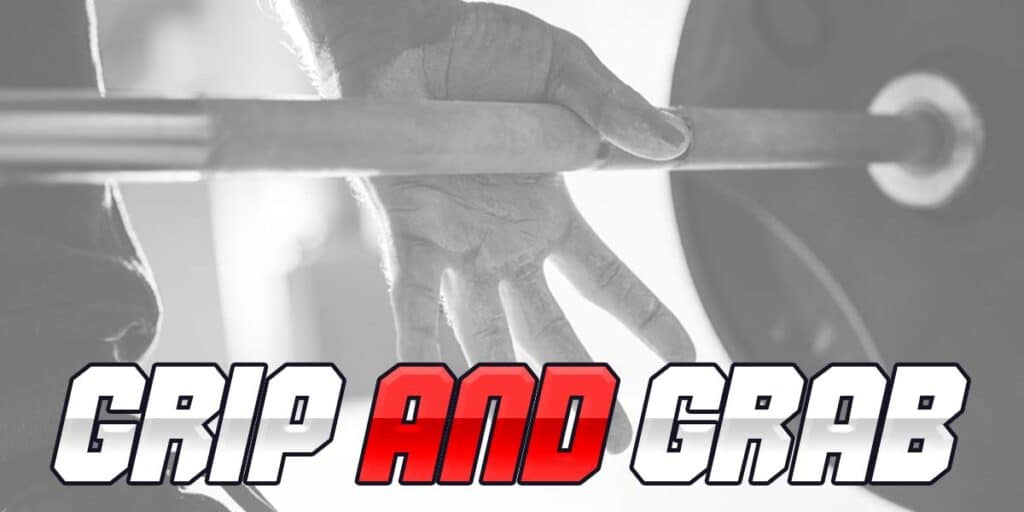
Related content:
Why use a mixed grip or weightlifting wrist straps when deadlifting?
When it comes to heavy deadlifts, if you have an otherwise healthy body, your grip strength will always be the limiting factor for how much weight you can successfully pull off the floor.
This is fine if you want to specifically train and improve your grip strength. However, traditionally speaking, this is not what deadlifts are meant for (improved grip strength is merely a bonus for most heavy lifters).
Deadlifts are meant to improve full-body strength, and this is very difficult to do if the primary (and MUCH stronger) deadlifting muscles (the leg, hip, and back muscles) are limited by how much weight your forearm flexor muscles can hold onto.
This is why lifters use the mixed grip (sometimes called an alternated grip) or wrist straps for exercises such as the deadlift; they allow the individual to hold onto much heavier loads so that the more powerful leg, hip, and back muscles can all be adequately challenged and stimulated.
Either method of securing the barbell within your hands can be extremely beneficial. Both the mixed grip and wrist straps will allow you to lift much heavier weight off the floor than a traditional double-overhand grip ever could.
Pro tip: In addition to the conventional deadlift, wrist straps and the alternated grip can be used with any type of barbell deadlift, such as the sumo deadlift, Romanian deadlift, paused deadlifts, etc.
Now, let’s look at the benefits and drawbacks of each of these deadlift-maximizing strategies. Their worth knowing since acquiring knowledge one of the many essential components to becoming the best athlete you can possibly become.
Wrist straps for deadlifts: Pros and cons
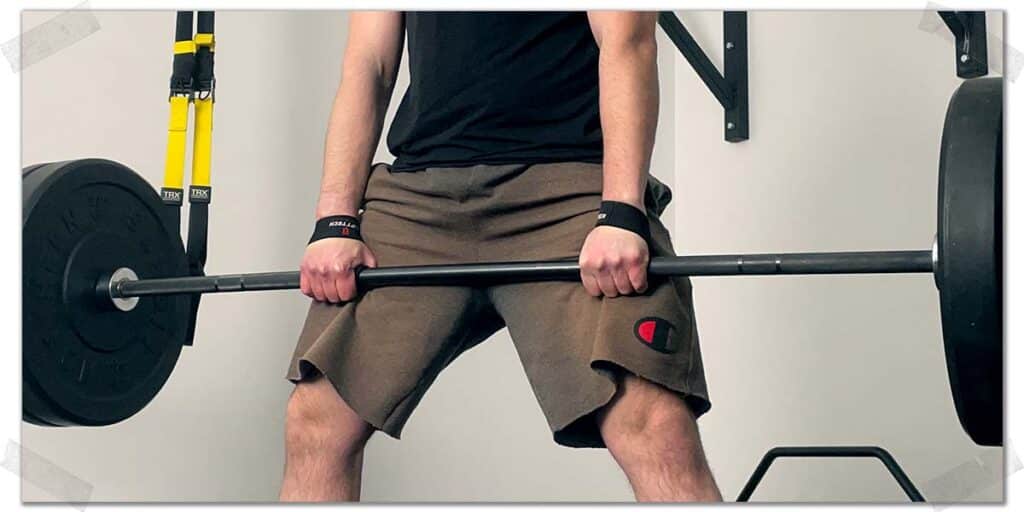
Numerous styles (and brands) of weightlifting straps can be used for heavy deadlifting. Regardless, they all achieve the same effect by wrapping around the barbell in some fashion to offload the effort your forearm muscles must exert to keep the barbell securely within your hands.
Pros of using wrist straps
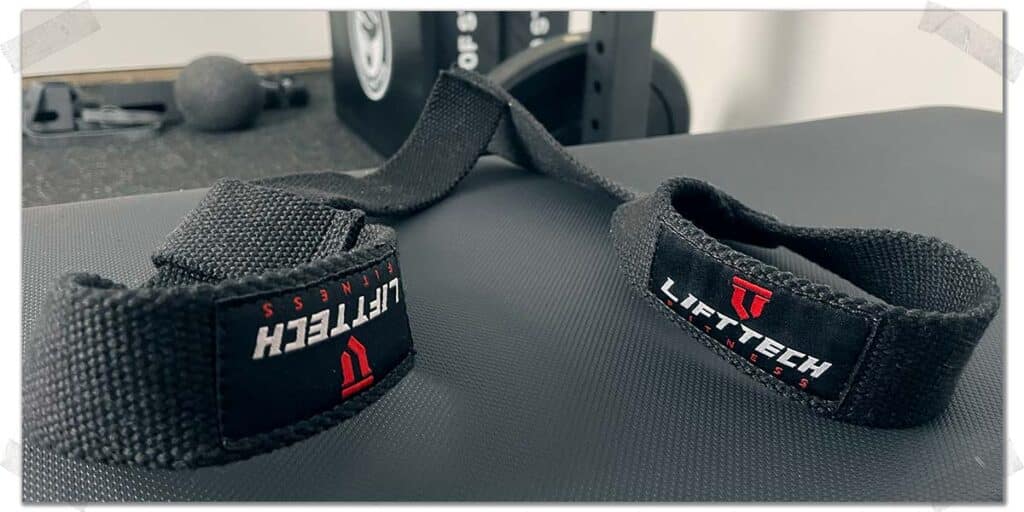
Below are some of the more common benefits that can be had when using wrist straps with any of your heavy deadlifting workouts. Keep in mind that there are additional benefits beyond what’s listed here and that it’s not an exclusive list.
Pro 1: Very inexpensive and durable
Wrist straps only cost a few bucks and will last many years, if not a lifetime.
Pro 2: Take up no space in your gym bag
Wrist wraps weigh next to nothing and take up virtually no space in your gym bag. This is a nice little feature for those of us who want to keep our gym bag as light and small as possible.
Pro tip: You can use your wrist straps for plenty of other exercises besides deadlifts; any pulling or carrying exercise can make use of these straps.
Pro 3: Very easy to use
Using wrist wraps is incredibly straightforward; you don’t exactly need specialized training to learn how to use them.
Pro 4: Can reduce or eliminate painful elbow conditions
High volumes of heavy grip work can lead to overuse injuries of the extensor and flexor tendons in your forearm, typically up near the elbow.
These conditions typically include:
- Tennis elbow (lateral epicondyle tendinopathy)
- Golfers elbow (medial epicondyle tendinopathy)
Since wrist straps drastically reduce the working intensity of your forearm muscles, they can be an effective way to minimize or eliminate tendon-based pain that is prevalent within the heavy-lifting population. They likely won’t be a cure for the issue, but they can make training much more manageable as you work to sort out the issue itself.
Pro 5: Can be used for dumbbell deadlifts
The Romanian dumbbell deadlift is a relatively common deadlift variation that lifters often perform due to some unique benefits. It can be performed with heavy dumbbells, and, as such, you can easily wrap straps around the dumbbell handles for this occasion as well.
Cons of using wrist straps
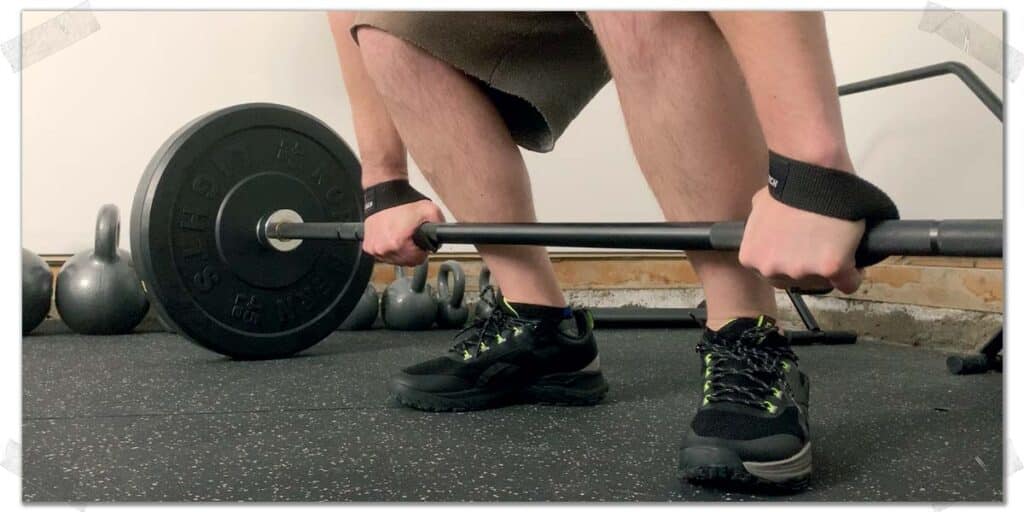
As you read some of the more significant drawbacks of using wrist wraps listed below, you may find that some aren’t much of an issue at all (depending on your own situation and needs) or that they are rather significant; it all depends on your goals and needs.
Con 1: Minimizes improvement of grip strength
It should go without saying that since wrist wraps offload the extent of effort your forearm muscles must exert when holding onto the barbell, you won’t be getting the added benefits of drastically improving your grip strength.
As pointed out in pro 4 of using straps, this can, at times, be a benefit, so it’s not a universal drawback. Rather, it’s only a negative factor if one of your primary or even tertiary objectives is to build up your grip strength. In this case, you’ll want to ditch the straps.
Con 2: Can’t be used in competition
If you’re a competitive lifter, you won’t be able to use lifting straps in a competition. As such, it may not benefit you to perform all of your deadlifting sessions while wearing wrist wraps (though they can still be selectively utilized in training).
If you’re a competitive lifter, you’ll want to check out my science-backed article on how to recover faster after leg day, which will lay down some invaluable information for your training.
As a competitive lifter, lifting heavy weights with straps can immensely boost your overall deadlift numbers, so I’m not suggesting throwing them out the window; rather, I’m merely pointing out that you’ll still want a fair amount of your deadlift training to forego any straps so that you build up the raw strength required to hold onto your maximal loads with a mixed grip.
Con 3: They can be uncomfortable on some lifters’ wrists
Some lifters find that wearing wrist straps for heavy deadlifts bothers their wrists. It’s not an overly common issue, but straps can cause issues for some lifters, particularly those who aren’t used to using them when lifting heavy.
Over the years, I’ve personally found some types of straps to be more comfortable than others; some dig or bite into my skin more than others, but it hasn’t been often that I’ve run into this issue.
Using the mixed grip for deadlifts: Pros and cons
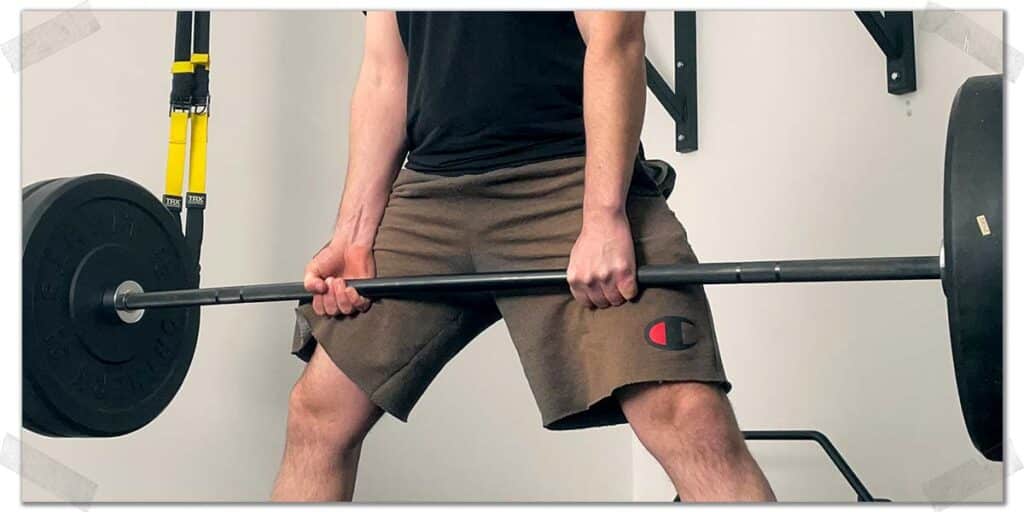
Now that you know the benefits and drawbacks of wrist straps, let’s quickly go over the pros and cons of the mixed or alternated grip when deadlifting.
Pros of using the mixed grip
Here are some of the more notable benefits for using the mixed grip during your deadlifting sessions.
Pro 1: Does not require equipment
This is quite self-explanatory; if you’ve got two arms and two hands, you’ve got all you need to use the mixed grip for your deadlifts.
Pro 2: Still trains grip strength to a certain extent
While an alternated deadlift grip won’t tax your forearm muscles nearly as much as the traditional double-overhand grip, it will still require a hefty amount of forearm strength. So, if you want to lift as many plates off the floor as possible but still want to challenge your grip strength, the mixed/alternated grip is the way to go.
Pro 3: Great for barbells with lousy knurling
If you’re caught off guard using a barbell with terrible knurling, the mixed grip can often save the day, especially when you don’t have any straps on hand that you can use. Chalk will go a long way, too, mind you, but if you planned on using a double-overhand grip for your deadlifts and have to use a lousy barbell, the mixed grip will go a long way in saving your deadlift session.
Cons of using the mixed grip
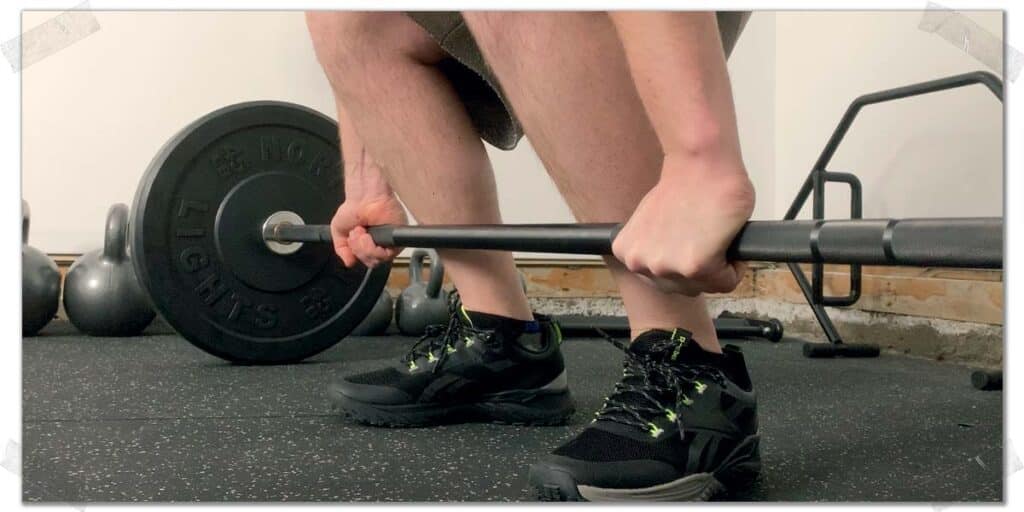
Just as with wrist wraps, there are times when the mixed grip may not be an ideal approach for any of your deadlift training.
Here are some common drawbacks that can be an issue for some lifters.
Con 1: High risk of biceps tendon irritation or rupture with heavier loads
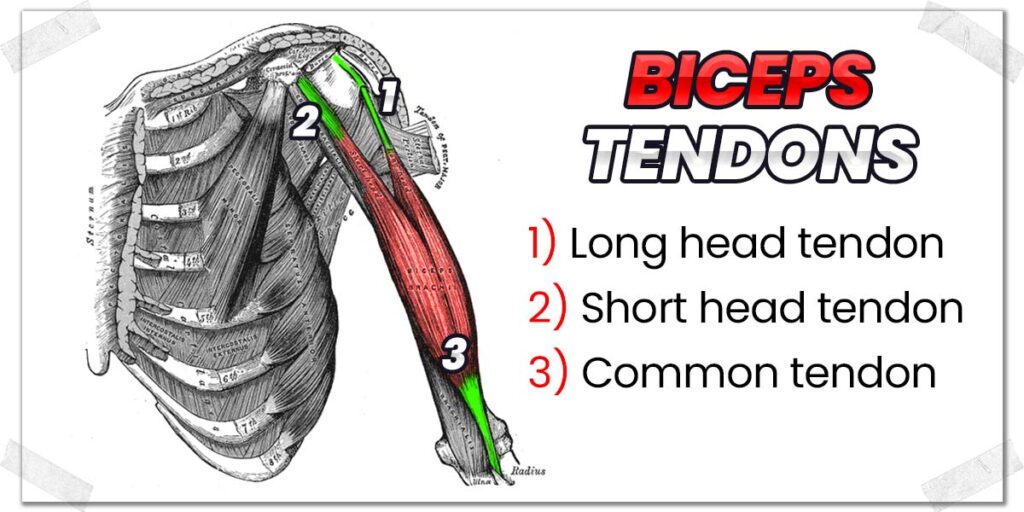
This is by far the greatest drawback of using the mixed grip; nobody wants to irritate or tear their biceps tendon.
Now, to be clear, tearing the biceps tendon only really occurs when lifting at near-maximal to maximal loads, so don’t start thinking it will happen at lighter or modest loads. But it’s certainly something you should be aware of if routinely going exceptionally heavy with deadlifting.
It’s also worth realizing that repeated heavy loads may irritate and stress the long head of the biceps tendon beyond what it can adequately endure, which can lead to pain and tenderness within the tendon, particularly when deadlifting.
Related content:
So, your best bet is simply to be aware of this and listen to your body as you perform your deadlifts; if something doesn’t feel right or feels uncomfortable, consider avoiding the mixed grip (use straps instead) until the issue is resolved.
Also, be sure to switch your grip up after each rep or every set (i.e., don’t perform all your training with the same hand using the underhand grip).
Alternating which palm is facing up ensures each tendon is loaded equally, which can help prevent overuse or soreness occurring in the biceps tendon that would otherwise receive double the workload.
Con 2: It may be uncomfortable for those with poor shoulder mobility
This isn’t the most common issue that lifters face with the alternated or mixed grip, but it’s not unheard of either, particularly in lifters who are in their forties or above.
Shoulders can lose their natural mobility (for various reasons), including the movement of external rotation (which happens when you turn your palm upwards when your elbow is straight).
Since the mixed grip requires the palm of one hand to be in a fully supinated position (turned upwards) to grab the barbell, it places the humerus bone (upper arm bone) in a near maximally externally rotated position, which may be painful for lifters who have poor shoulder mobility.
Con 3: Can only be used with barbell deadlifts
This certainly isn’t the most pertinent issue of the mixed grip, but it’s worth mentioning. If you plan on doing heavy deadlifts with dumbbells (typically via the Romanian deadlift variation), you can’t really use a mixed grip (it will feel extremely awkward and unnatural), so you’ll need to use a double overhand grip.
But if you plan on using heavy dumbbells, they may be rather difficult to hold onto, which will force your hand to wear wrist straps if you want to stick with heavy dumbbells for the exercise.
Not a super big deal by any means, but worth mentioning.
Final thoughts
When it comes to finding ways to deadlift heavier weights, wrist straps and the mixed grip are two surefire ways to get the job done. Neither is inherently right or wrong; it all comes down to your training needs and goals.
So, now that you know the pros and cons of each, go pull some weight off the floor!
Frequently Asked Questions
To help further expand the helpful content within this article, I’ve included some answers to frequently asked questions that lifters and other individuals often have when it comes to the topic of grip types and deadlifts. I hope you find it helpful and that it answers a particular question you may have!

Hi! I’m Jim Wittstrom, PT, DPT, CSCS, Pn1.
I am a physical therapist who is passionate about all things pertaining to strength & conditioning, human movement, injury prevention and rehabilitation. I created StrengthResurgence.com in order to help others become stronger and healthier. I also love helping aspiring students and therapists fulfill their dreams of becoming successful in school and within their clinical PT practice. Thanks for checking out my site!

